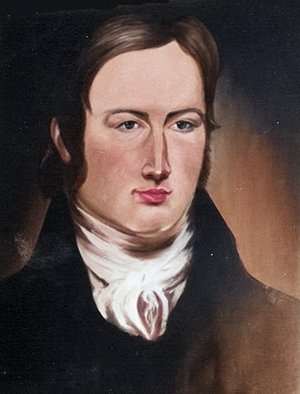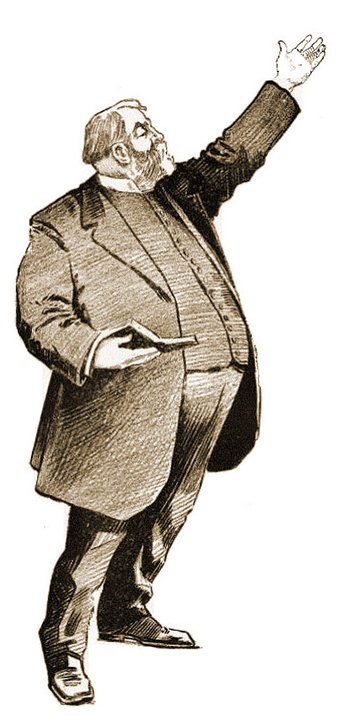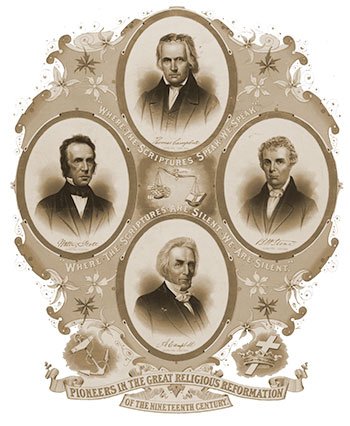1860 Pettah Revival, India

Charles Rhenius, the apostilic missionary who led 1000’s to Christ and opened the seminary where John Christian Aroolappen trained for his work.
Introduction
The Christian Pettah Revival of 1860 stands as a significant event in the history of Christianity in India. This revival, characterized by fervent prayer, spiritual awakenings, and a renewed commitment to Christian living, had a profound impact on the religious landscape of the region and foreshadowed elements of later Pentecostal movements.
To place this in a broader historical context, it is worth noting that revivals have been a recurring phenomenon in Christianity throughout history, with notable examples including the revivals under Jacob (1700 BC), Moses (1462 BC), Elijah (879 BC), and John the Baptist (26 AD), as well as the Protestant Reformation and various awakenings in the 18th and 19th centuries1. This article delves into the history of the Pettah Revival, exploring its antecedents, key figures, and lasting consequences.
Christianity in Madras Presidency Before 1860
To understand the context of the Pettah Revival, it’s essential to examine the state of Christianity in the Madras Presidency prior to 1860. While Hinduism dominated the religious landscape of India 2, Christianity had been gradually gaining a foothold in the region. Madras itself was a diverse city, with Christians comprising about 10% of the population3.
Missionary efforts played a crucial role in the spread of Christianity. Organizations like the Society for Promoting Christian Knowledge and the Church Missionary Society established schools and churches, working to educate and convert the local population4. These missionaries emphasized “love, kindness, moral values, social service, prayer, education, and discipline.” 3
By the 1830s and 1840s, various mission societies, including the American Baptist Mission, Godavari Delta Mission, and the American Lutheran Mission, had established their presence in the Telugu-speaking districts of the Madras Presidency5. Despite these efforts, the growth of Christianity remained relatively slow in the years leading up to the Pettah Revival6.
The Rise of John Christian Aroolappen
The Christian Pettah Revival is intricately linked to the life and ministry of John Christian Aroolappen (1810-1867). Born in India, Aroolappen received his education at a mission school, where he learned English7. In 1822, he enrolled in a seminary founded by Charles Rhenius, a German missionary associated with the Church Missionary Society7.
Aroolappen’s commitment to his faith deepened while working as a translator for missionary Anthony Norris Groves in the Tinnevelly district. An encounter with a Brahmin who questioned his motives led Aroolappen to renounce financial support from European sources and embrace a life of faith and service7.
By 1840, Aroolappen’s ministry had expanded significantly. He acquired land from the government and established Christian Pettah, a village where persecuted Christians could find refuge and worship together7. His ministry grew to encompass 33 villages, with churches, schools, and even a printing press under his oversight7.
The Spark of Revival
In 1860, Aroolappen, inspired by reports of revivals in England and America, began to earnestly pray for a similar outpouring of the Holy Spirit in India7. He was particularly influenced by the Layman’s Prayer Revival of 1857 and the Ulster Revival of 18597. This desire for revival coincided with a call from the American Presbyterian mission in Ludhiana, Punjab, for a week of prayer for global revival in January 18607.
Aroolappen’s fervent prayers and the collective yearning for spiritual renewal among the Christians in Pettah set the stage for the remarkable events that unfolded. The “spirit of supplication” was poured out on these believers, leading them to gather three times each day – morning, noon, and evening – to seek the Lord for an outpouring of the Spirit7. This emphasis on prayer echoes the role of prayer meetings in past revivals, such as those in Ireland in the 1620s and 1740s8.
The 1860 Revival Unfolds
The revival began in the village of Ukkirankottei, where a sermon by Aroolappen, emphasizing the Holy Spirit’s power and the importance of prayer, ignited a profound sense of conviction among the congregation7. At the conclusion of this sermon, Aroolappen exhorted the people to (1) repent of all known sins, (2) meditate on the Scriptures night and day, and (3) love the Lord Jesus Christ7. This conviction of sin spread rapidly to other villages, marked by intense emotional and spiritual experiences7.
People were overcome with “deep mental anguish,” “piercing cries for mercy,” and “involuntary prostration.” 7 Many experienced physical manifestations like trembling and swaying, reflecting the deep spiritual transformation taking place7. Confession of sin and a newfound reverence for God’s Word became central aspects of the revival7.
Practices and Testimonies
The Pettah Revival was characterized by specific practices that contributed to its impact. These included:
Intense Prayer
The revival was fueled by fervent and persistent prayer, with believers gathering three times daily to seek God’s presence7. This echoes the emphasis on prayer seen in other revival movements, such as the Layman’s Prayer Revival of 1857 in the United States10. During these prayer meetings, people would offer heartfelt petitions for themselves and others, including requests for healing, guidance, and spiritual growth.
For example, one request read, “For pity’s sake, lend me your prayers for a first-born son. He curses me, his widowed mother; and, with a demon scowl, has turned his back on me for life… For God’s sake, pray for Willie that he may be a minister of Christ.” 10
Fasting
Fasting, often combined with prayer, played a significant role in deepening the spiritual experience of the revival participants7.
Communal Living
In Christian Pettah, around 100 people, including children, shared meals and lived communally, fostering a strong sense of unity and fellowship7. This practice reflected the early church’s emphasis on communal living and sharing resources, as described in the Book of Acts11.
Evangelism
The revival led to a surge in evangelistic activity, with newly revived Christians sharing their faith with Hindus and Muslims in the district7.
Testimonies
Sharing personal testimonies of conversion and spiritual encounters became a powerful element of the Pettah Revival, similar to its use in other Pentecostal movements12. These testimonies provided evidence of the revival’s impact and encouraged others to seek a similar experience of God’s grace.
Examples of Prayers
The prayers offered during the Pettah Revival reflected a deep longing for God’s presence and a desire for spiritual renewal. Some examples include:
- “Pour down the Holy Spirit upon all ministers of the Gospel. Make them more zealous and more faithful.” 13
- “May there be more life, earnestness and fervour in all our religious assemblies.” 13
- “May there be less Sabbath-breaking, and drunkenness, and worldliness, and covetousness, and pride, and formality, and self-righteousness in the land this year.” 13
These prayers highlight the revival’s focus on personal and communal transformation, as well as a desire for a more vibrant and authentic Christian life.
Personal Testimonies
Personal testimonies from the revival provide glimpses into the transformative power of the movement. One missionary noted a “marvellous reform” in a previously “disorderly and unsatisfactory” congregation, with a significant decrease in vices like drunkenness7.
The revival’s impact is further illustrated by quotes from those who experienced it firsthand. One missionary wrote of the converts, “One thing is very marked, their intense reverence for the word of God, and desire to be conformed to it in all particulars.” 11 This highlights the revival’s emphasis on Scripture and its role in shaping Christian life.
Spiritual Encounters
The Pettah Revival was also marked by profound spiritual encounters. A missionary recounted, “Man seems to have little part in it, the Spirit’s work is all predominant, fulfilling that blessed promise, ‘I will work.'” 11 This quote captures the sense that God was actively at work in the lives of individuals and communities.
Opposition and Acceptance
The Pettah Revival, like many other revival movements, faced opposition from some within the Church. European missionaries, unfamiliar with the intensity of the spiritual manifestations, initially expressed scepticism and even attempted to quell the movement7. Some missionaries were concerned that the revival was encouraging “superstitious feeling” or “self-complacency.” 10 However, as the revival continued and its positive fruits became evident, many of these missionaries acknowledged the genuineness of the work of the Holy Spirit7.
The Rev. Mr. Dibb, a European missionary with the Church of England, initially opposed the revival but later stated, “I am happy to say that the movement is still progressing. It is chiefly observed among careless and nominal Christians; But it is not confined to them. Heathen have here and there been brought under the influence of the movement.” 7
Lasting Impact
The Pettah Revival had both immediate and long-term effects on the region. While precise numbers are difficult to ascertain, historical accounts suggest a significant number of conversions and a renewed commitment to Christian faith among existing believers7. The revival also led to increased church attendance, a decline in social ills like drunkenness, and a greater emphasis on prayer and Bible study7.
Even after the initial fervour subsided, the Christians in the region continued to exhibit positive changes, such as living according to their conscience, faithfully attending prayer meetings, and showing greater love for one another7.
The revival’s influence extended beyond Christian Pettah, spreading to other parts of India and even influencing the growth of Pentecostalism in the country15. The emphasis on spiritual experience, charismatic gifts, and indigenous leadership that characterized the Pettah Revival foreshadowed key elements of the Pentecostal movement that would emerge later in the 20th century.
Notably, the Pettah Revival, with its “outpourings of the Spirit,” including prophecy, healing, and speaking in tongues, occurred decades before the Azusa Street Revival, often considered the starting point of modern Pentecostalism16. This suggests that the Pettah Revival played a significant role in laying the groundwork for the Pentecostal movement in India.
The revival also had a broader impact on the religious landscape of the region. In Colombo, Sri Lanka, for example, the same period saw significant transformations, including the dismantling of the fort, the emergence of new residential areas, and the growth of colonial culture17.
This suggests that the Pettah Revival was part of a wider context of religious and social change in South Asia during the mid-19th century. Furthermore, this period coincided with a Buddhist revival in Sri Lanka, where Buddhist activists sought to revitalize their faith and reassert their religious and cultural identity18.
The Jamaica Revival of 1860 provides a compelling parallel to the Pettah Revival. Like the Pettah Revival, the Jamaica Revival was characterized by widespread religious fervour, with packed churches and thousands of conversions19. The Baptist churches in Jamaica recorded 12,000 conversions, and the Presbyterians saw over 4,700 conversions in the two years following the revival19.
The revival also had a profound social impact, leading to a decrease in crime, the healing of broken marriages, and the abandonment of harmful superstitions9. This suggests that revivals, like the one in Pettah, can have far-reaching consequences, not only for individuals but also for communities and society as a whole.
The spread of Christianity in Ceylon (Sri Lanka) also provides valuable context for understanding the Pettah Revival. The Church Missionary Society had a long history in Ceylon, with missionaries working to establish churches and schools20. This highlights the ongoing efforts to spread Christianity in South Asia during the 19th century and the diverse ways in which Christianity was taking root in different parts of the region.
The role of women in the Pettah Revival, while not extensively documented, is likely significant. Drawing parallels with other movements, such as the spread of Pentecostalism in India, where women like Alice Luce played crucial roles in pioneering indigenous churches, suggests that women may have been instrumental in the Pettah Revival as well15.
Scholarly work on the Pettah Revival, such as that by Allan Anderson, has shed further light on the revival’s significance and its connection to the broader Pentecostal movement15. Anderson’s research highlights the Pettah Revival as an early example of a Pentecostal-type movement, predating the Azusa Street Revival and demonstrating the indigenous roots of Pentecostalism in India.
Conclusion
The Christian Pettah Revival of 1860 stands as a testament to the transformative power of the Holy Spirit. Led by the visionary John Christian Aroolappen, this revival ignited a spiritual awakening that had a lasting impact on the Christian community in India. Its emphasis on prayer, spiritual experience, and indigenous leadership continues to resonate in contemporary Christianity, particularly within the Pentecostal tradition.
The Pettah Revival serves as a reminder that God can move powerfully in unexpected ways, bringing renewal and transformation to individuals and communities. Its story offers encouragement and inspiration to those seeking a deeper experience of faith and a greater outpouring of the Holy Spirit in their own lives and contexts.
The research findings highlight several key takeaways about the Pettah Revival:
- The Power of Prayer: The revival was sparked and sustained by fervent, persistent prayer, both individual and communal.
- Indigenous Leadership: Aroolappen’s leadership as an Indian Christian played a crucial role in the revival’s success and its resonance with the local community.
- Spiritual Experience: The revival was characterized by intense spiritual experiences, including conviction of sin, physical manifestations, and a renewed focus on Scripture.
- Social Impact: The revival led to positive changes in the lives of individuals and communities, including decreased social ills and increased church attendance.
- Historical Significance: The Pettah Revival foreshadowed key elements of the Pentecostal movement and contributed to the development of indigenous Christianity in India.
These findings underscore the importance of the Pettah Revival as a significant event in Christian history, with implications for understanding the dynamics of revival movements, the role of indigenous leadership, and the development of Pentecostalism in India.
Works cited
- 693 Accounts of Revival – BEAUTIFUL FEET, accessed on December 17, 2024, https://romans1015.com/accounts-of-revival/
- History of Hinduism – Wikipedia, accessed on December 17, 2024, https://en.wikipedia.org/wiki/History_of_Hinduism
- The Role of Christian Missionaries in Madras Presidency – A Historical Study – World Wide Journals, accessed on December 17, 2024, https://www.worldwidejournals.com/indian-journal-of-applied-research-(IJAR)/recent_issues_pdf/2014/February/February_2014_1391258692_a81fc_68.pdf
- Our Oldest Indian Mission, by A. Westcott (1897) – Project Canterbury, accessed on December 17, 2024, https://anglicanhistory.org/india/madras1897/
- Telugu Christians – Wikipedia, accessed on December 17, 2024, https://en.wikipedia.org/wiki/Telugu_Christians
- Church Missionary Society in Coastal Andhra, 1850-1950: Mediating Change among the Malas – Mission Theology In The Anglican Communion, accessed on December 17, 2024, http://www.missiontheologyanglican.org/article/church-missionary-society-in-coastal-andhra-1850-1950-mediating-change-among-the-malas/
- 1860 Christian Pettah Revival – BEAUTIFUL FEET, accessed on December 17, 2024, https://romans1015.com/christian-pettah/
- Great Article on Prayer and Revival – ::The Grand Awakening, accessed on December 17, 2024, https://www.grandawakening.org/great-article-on-prayer-and-revival.html
- Revival in Jamaica 1860, accessed on December 17, 2024, https://revival-library.org/histories/1860-revival-in-jamaica/
- Revival Born in a Prayer Meeting – C.S. Lewis Institute, accessed on December 17, 2024,
https://www.cslewisinstitute.org/resources/revival-born-in-a-prayer-meeting/ - IN THE DAY OF THY POWER The Scriptural Principles of Revival By Arthur Wallis FOREWORD It is with very real pleasure that I ….., accessed on December 17, 2024, http://ministertominister.org/cms/data/uploads/downloads/Prayer/In-the-Day-of-Thy-Power-Arthur-Wallis.pdf
- Christian Mass Movements in South India and Some of The Critical Factors that Changed the Face of Christianity in India – Scholarship@Western, accessed on December 17, 2024, https://ir.lib.uwo.ca/cgi/viewcontent.cgi?article=11728&context=etd
- A Prayer for Revival – Decision Magazine, accessed on December 17, 2024, https://decisionmagazine.com/a-prayer-for-revival/
- TESTIMONY OF CONVERSION AND RESTITUTION OF FALSIFIED RECORDS: Holiness Revival Movement Worldwide., accessed on December 17, 2024, https://www.horemowna.org/daily-devotional/testimony-of-conversion-and-restitution-of-falsified-records-holiness-revival-movement-worldwide
- revival – PCPJ, accessed on December 17, 2024, https://pcpj.org/tag/revival/
- History | PCPJ, accessed on December 17, 2024, https://pcpj.org/category/history/
- The Transformations in Colombo Over the Last 150 Years | Thuppahi’s Blog, accessed on December 17, 2024, https://thuppahis.com/2024/08/12/the-transformmations-in-colombo-over-the-last-150-years/
- THE ROLE OF VENERATING THE BUDDHA IN THE MODERNIZATION OF BUDDHISM IN SRI LANKA by Soorakkulame Pema – D-Scholarship@Pitt, accessed on December 17, 2024, https://d-scholarship.pitt.edu/31565/1/Pemarathana%20Dissertation%20April%202017%20%2024%20Final_1.pdf
- The Great Jamaica Revival, 1860 – Landmark Events, accessed on December 17, 2024, https://landmarkevents.org/the-great-jamaica-revival-1860/
- RAIDING, CMS, – Christ Church Galle Face (Tamil), accessed on December 17, 2024, https://www.christchurchgft.org/wp-content/uploads/2019/08/One-Hundred-years-of-CMS-Mission-in-Ceylon-PDF-File.pdf



